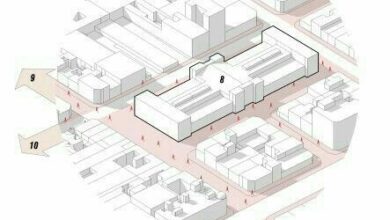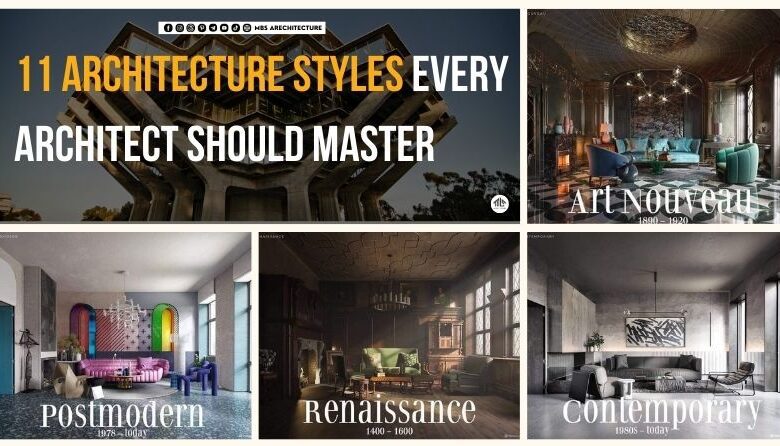
11 Architecture Styles Every Architect Should Master
Architecture is an ever-evolving field, with styles reflecting the cultural, technological, and aesthetic values of different eras. For architects, understanding the key principles of these styles is essential, as they form the foundation upon which new designs are built. Here, we explore 11 architectural styles that every architect should master, detailing their unique features and historical significance. Each of these styles has played a crucial role in shaping the built environment we see today.
1. Renaissance Architecture
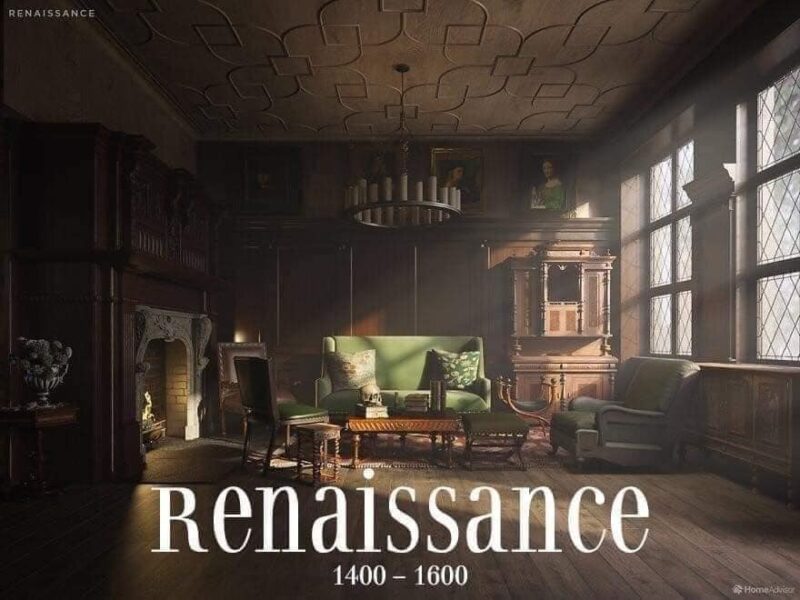
Renaissance architecture emerged in the 15th century in Italy and marked a return to classical Greek and Roman ideals. It is characterized by symmetry, proportion, geometry, and the use of classical orders such as Doric, Ionic, and Corinthian columns. Architects during this period sought to create harmonious, balanced structures that conveyed beauty through mathematical precision.
Key elements of Renaissance architecture include:
- Symmetrical layouts and façades.
- Use of columns and pilasters for structural and decorative purposes.
- Domes and rounded arches reminiscent of Roman structures.
- Focus on human scale and proportionality.
Notable Example:

- St. Peter’s Basilica in Vatican City, designed by Michelangelo and others, is one of the most famous Renaissance buildings in the world, showcasing grand proportions and the revival of classical elements.
2. Baroque Architecture
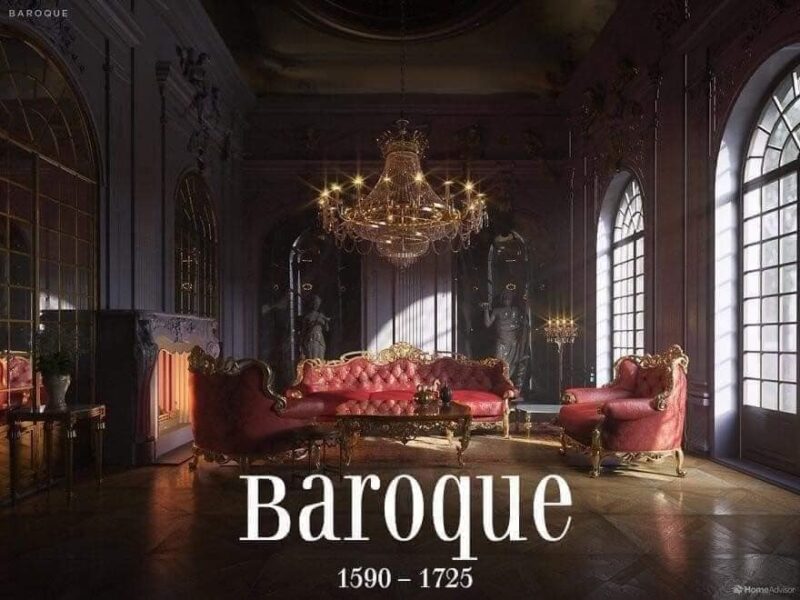
Baroque architecture, originating in the late 16th century, took Renaissance principles and infused them with emotion, drama, and grandeur. This style is known for its bold, dynamic shapes, opulent ornamentation, and theatrical use of light and shadow. Baroque buildings often appear in motion due to their curves, exaggerated forms, and undulating facades.
Key characteristics of Baroque architecture:
- Dramatic use of light and shadow (chiaroscuro).
- Curved lines and dynamic movement in structure.
- Ornate detailing, often gilded and lavish.
- Integration of sculpture and painting into the architecture.
Notable Example:
- Palace of Versailles in France, designed by Louis Le Vau and Jules Hardouin-Mansart, exemplifies the grandeur and excess of the Baroque period with its monumental size, intricate interiors, and expansive gardens.
3. Rococo Architecture
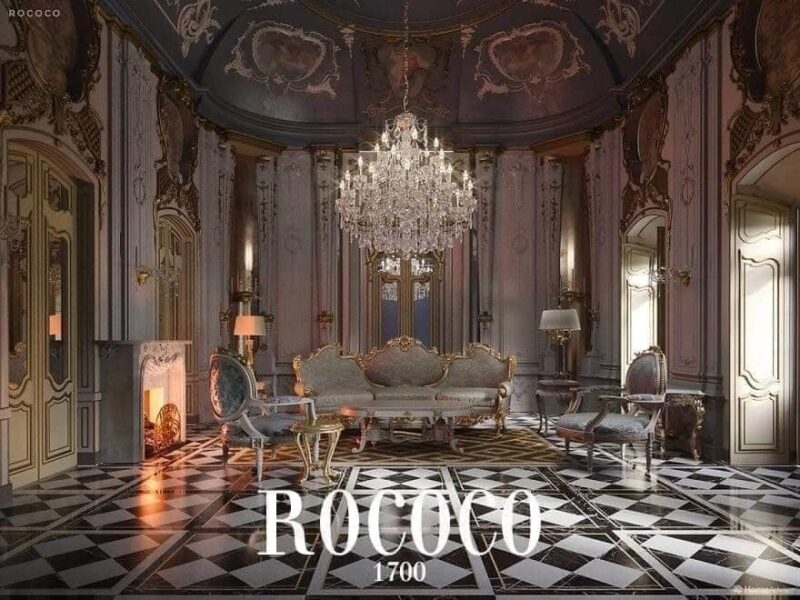
Rococo emerged in the early 18th century as a more playful and decorative evolution of Baroque architecture. This style is lighter, more whimsical, and often asymmetrical, using pastel colors and delicate ornamentation. While Baroque was grand and imposing, Rococo embraced intimacy and intricate detail.
Key features of Rococo architecture:
- Curved forms and asymmetry.
- Delicate ornamentation with floral motifs.
- Use of light colors like pastels, gold, and ivory.
- Interiors that feel light, airy, and luxurious.
Notable Example:
- The Amalienburg in Munich, Germany, designed by François de Cuvilliés, is an exquisite Rococo hunting lodge, featuring lavish interiors with intricate plasterwork and mirrors.
4. Neoclassical Architecture
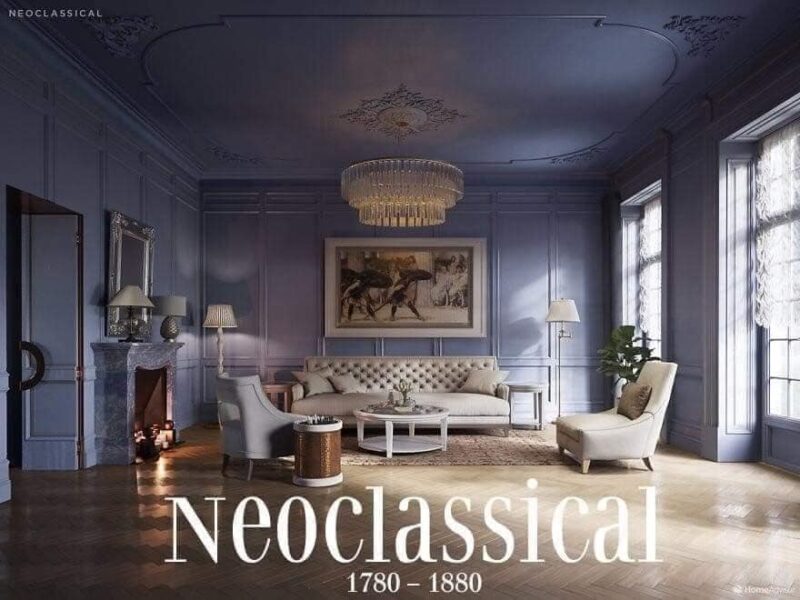
In the mid-18th century, architects reacted against the excessive ornamentation of Baroque and Rococo by returning to the simplicity and grandeur of classical antiquity. Neoclassical architecture is defined by its straight lines, symmetry, and restrained decorative elements, often drawing inspiration from ancient Greek and Roman temples.
Key characteristics of Neoclassical architecture:
- Emphasis on simplicity and geometric forms.
- Use of columns, porticos, and pediments.
- Focus on symmetry and proportion.
- Large, imposing structures designed to convey grandeur.
Notable Example:
- The White House in Washington, D.C., designed by James Hoban, is a quintessential example of Neoclassical architecture, with its grand portico, symmetrical design, and use of classical orders.
5. Art Nouveau
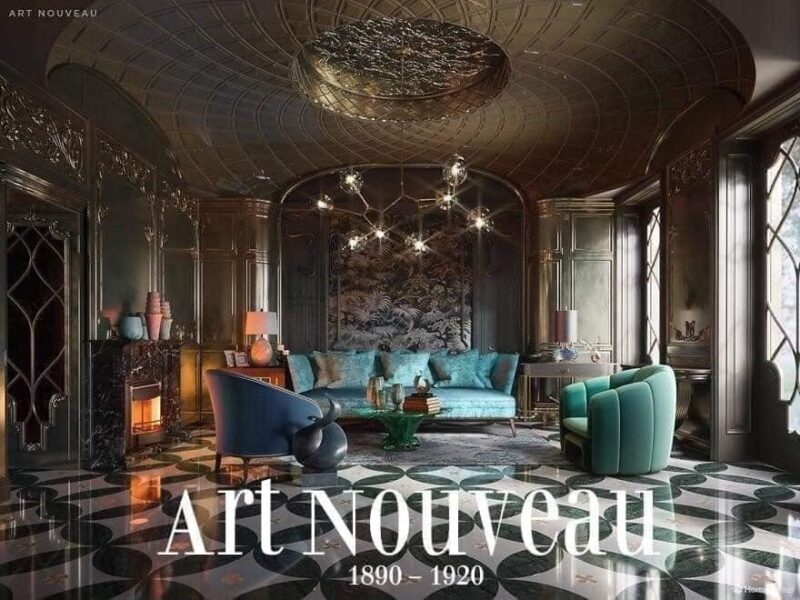
Emerging in the late 19th century, Art Nouveau was a reaction against the rigid forms of Neoclassicism and the industrialization of the time. This style embraces natural, flowing lines and organic forms, often featuring plant motifs, curved lines, and intricate ironwork. Art Nouveau sought to break down the boundary between fine art and applied arts.
Key features of Art Nouveau:
- Organic, flowing lines inspired by nature.
- Use of natural motifs, such as plants, flowers, and insects.
- Curved, asymmetrical shapes and ornate ironwork.
- Integration of decorative art into the overall design of buildings.
Notable Example:
- Casa Batlló in Barcelona, designed by Antoni Gaudí, is one of the most famous examples of Art Nouveau, with its flowing facade, irregular windows, and colorful, organic forms.
6. Art Deco

In the 1920s and 1930s, Art Deco emerged as a modern, forward-looking style that celebrated industrialization and technological progress. Characterized by bold geometric shapes, vibrant colors, and lavish ornamentation, Art Deco is a style that conveys both luxury and modernity.
Key characteristics of Art Deco:
- Geometric patterns and symmetrical designs.
- Use of luxurious materials, such as marble, chrome, and glass.
- Bold, vivid colors and stylized, decorative elements.
- Streamlined forms that evoke movement and speed.
Notable Example:
- The Chrysler Building in New York City, designed by William Van Alen, is one of the most iconic Art Deco skyscrapers, with its gleaming metal crown, geometric design, and lavish interiors.
7. Bauhaus
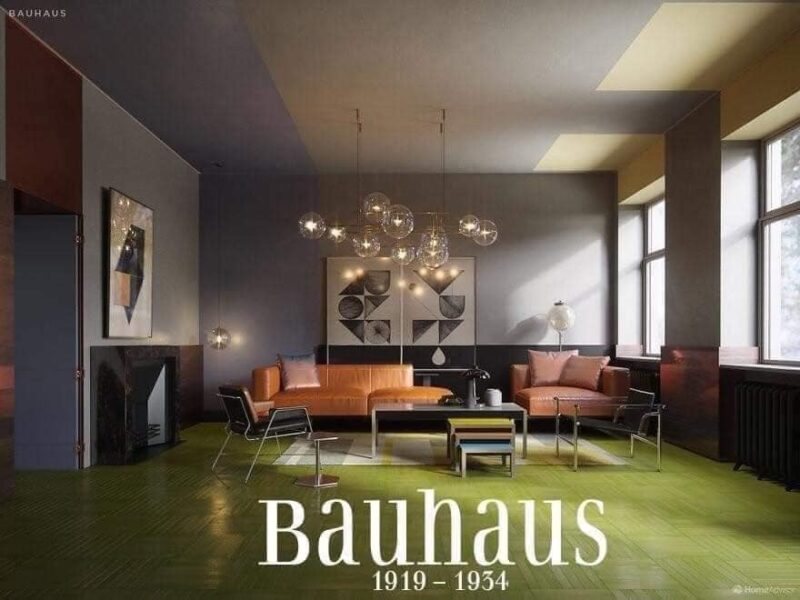
The Bauhaus school, founded by Walter Gropius in Germany in 1919, aimed to unify art, craft, and technology to create functional, minimalist designs. Bauhaus architecture focuses on clean lines, the absence of ornamentation, and the integration of form and function.
Key features of Bauhaus architecture:
- Minimalist design with no unnecessary ornamentation.
- Use of industrial materials, such as steel, glass, and concrete.
- Emphasis on functionality and practicality.
- Integration of art and technology in design.
Notable Example:
- The Bauhaus Dessau building in Germany, designed by Walter Gropius, is a hallmark of Bauhaus design, with its functional layout, glass curtain walls, and use of industrial materials.
8. Modernism
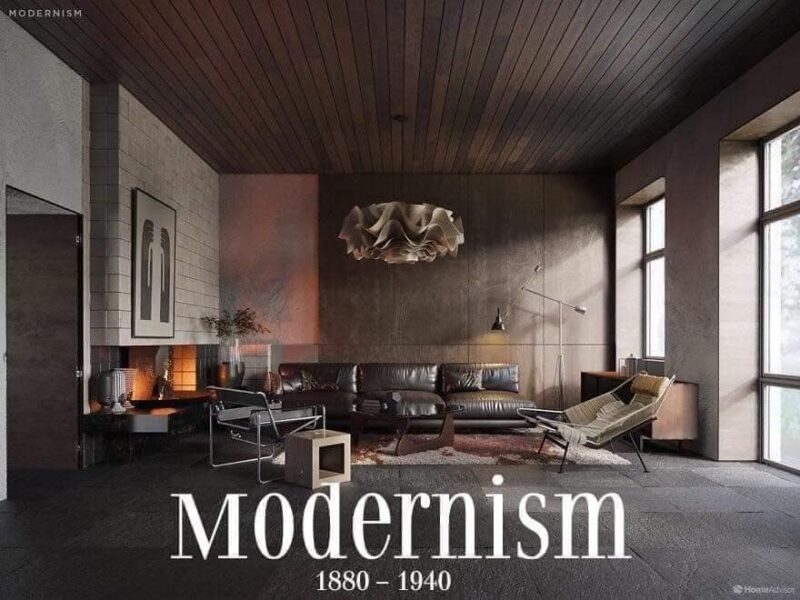
Modernist architecture, which developed in the early 20th century, rejected historical styles in favor of minimalism, functionalism, and the use of new materials like steel, glass, and reinforced concrete. Modernist buildings are often characterized by their open floor plans, lack of ornamentation, and focus on the needs of the occupants.
Key features of Modernism:
- Minimalism and clean, simple lines.
- Open floor plans with flexible interior spaces.
- Use of modern materials like steel, concrete, and glass.
- Emphasis on functional design over aesthetics.
Notable Example:
- Villa Savoye by Le Corbusier in France is a prime example of Modernist architecture, with its open plan, pilotis (stilts), and emphasis on form following function.
9. Mid-Century Modern
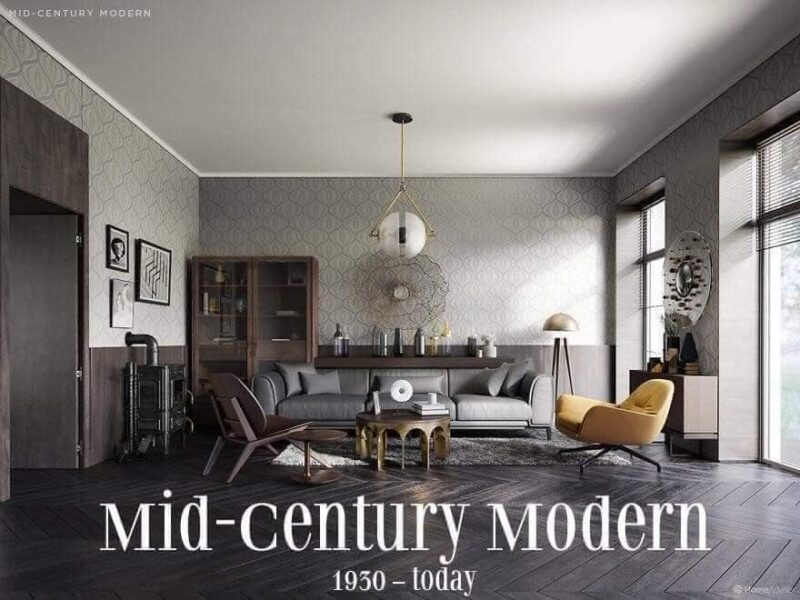
Mid-Century Modern architecture, popular from the 1940s to the 1960s, is known for its clean lines, integration with nature, and use of natural materials. This style emphasizes simplicity and the blurring of indoor and outdoor spaces through large windows and open floor plans.
Key features of Mid-Century Modern architecture:
- Clean, sleek lines and minimal ornamentation.
- Integration with nature through large glass windows.
- Use of natural materials, such as wood and stone.
- Open floor plans and functional layouts.
Notable Example:
- The Eames House in Los Angeles, designed by Charles and Ray Eames, is a classic example of Mid-Century Modern design, with its modular layout, large windows, and connection to the surrounding landscape.
10. Postmodernism

In reaction to the austerity of Modernism, Postmodernism emerged in the late 20th century, embracing eclecticism, playfulness, and irony. Postmodern buildings often combine historical elements with modern design, creating unique, whimsical structures that defy easy categorization.
Key characteristics of Postmodernism:
- Use of historical references alongside modern elements.
- Emphasis on eclecticism and variety in form and materials.
- Playful, often ironic, designs that challenge traditional norms.
- Mixing of high and low cultural references in architecture.
Notable Example:
- The Piazza d’Italia in New Orleans, designed by Charles Moore, is a playful example of Postmodern architecture, combining classical columns with modern materials in a whimsical, ironic way.
11. Contemporary Architecture
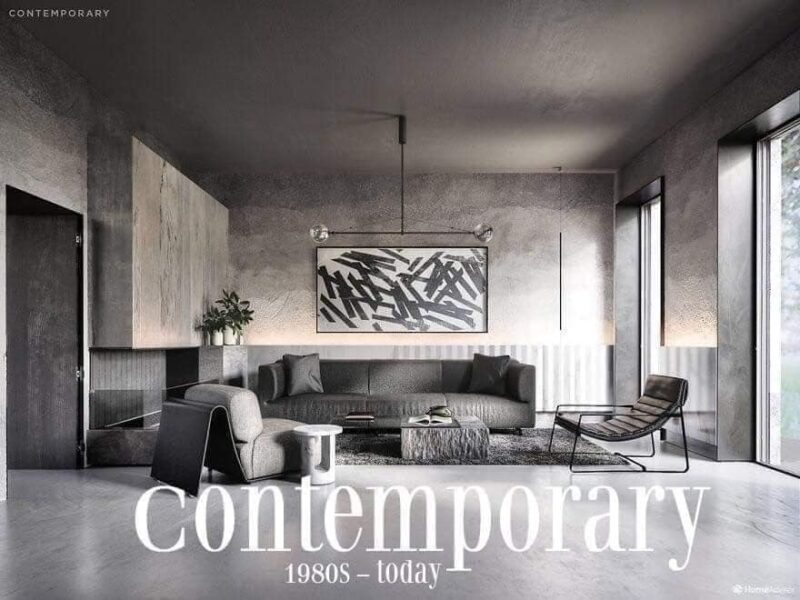
Contemporary architecture reflects the trends, technologies, and social concerns of the present day, with a strong emphasis on sustainability, innovation, and diversity in design. Contemporary buildings often prioritize environmental responsibility, using eco-friendly materials and energy-efficient technologies.
Key features of Contemporary architecture:
- Focus on sustainability and eco-friendly design.
- Use of cutting-edge technologies and materials.
- Innovative, often non-traditional forms and layouts.
- Emphasis on energy efficiency and environmental impact.
Notable Example:
- The Guggenheim Museum Bilbao by Frank Gehry is an iconic example of Contemporary architecture, with its undulating, sculptural form and use of titanium panels, pushing the boundaries of traditional building design.
Each of these 11 architectural styles offers unique lessons and design principles that continue to influence architects today. By mastering these styles, architects can gain a deeper understanding of how to balance form, function, and aesthetics, while also responding to the cultural and technological demands of their time. Whether drawing inspiration from the grandeur of Baroque or the sleek minimalism of Bauhaus, architects today continue to build upon the foundations of these iconic styles to create innovative and sustainable structures for the future.
References:
- “A Visual Dictionary of Architecture” by Francis D.K. Ching
- “Bauhaus: Art as Life” by Alan Powers
- “The Architecture of Happiness” by Alain de Botton
- “Modern Architecture Since 1900” by William J.R. Curtis
- “Le Corbusier: Ideas and Forms” by William J.R. Curtis



